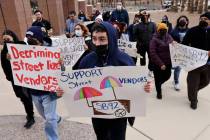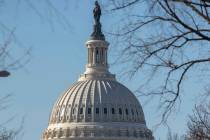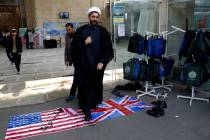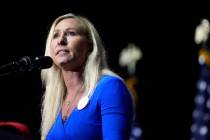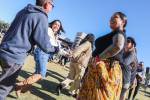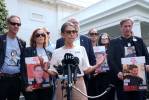Navajo Nation making huge economic strides
In the 1940s and ’50s, my tribe was one of the poorest in the country. Navajo tribal leaders, hoping to bring additional revenues into our tribal treasury, embarked on several business ventures. One success has been Navajo Arts and Crafts Enterprise, established in 1941 and celebrating 75 years this year.
In 1961, the Navajo Nation reached $20 million in yearly revenues. Like many tribes, that revenue was primarily from mining companies paying us for extracting our natural resources: uranium, oil and coal.
In the years since, we established new business enterprises, and some made it, while others didn’t. Still, we now have 13 tribal business enterprises and corporations bringing revenue to the tribe. In 2014, those enterprises brought a record $971 million to the tribe and employed 4,500 workers, mostly tribal members. And gaming was only 15 percent of this revenue.
But like most tribes, we are still faced with a 50 percent unemployment rate, and we have social ills plaguing our people. We have a diabetes epidemic, youth suicide epidemic and low levels of educational attainment. For Indian nations to combat these monsters, we need more revenue to match scarce federal funds.
The Navajo Nation uses additional revenues to fund needy programs and services. One such program for the elderly, the Navajo Area Agency on Aging, receives 85 percent of its program services costs from our general revenues. Our USDA food distribution program for the needy requires a matching fund with federal funds. We provide 25 percent of those funds.
This week, many tribes from across the country will gather in Las Vegas for the Res 2016 convention, to celebrate business successes, seek out new business opportunities and find innovative ways to get around common barriers many of us face. Some will look for economic development opportunities in Indian Country, such as energy and e-commerce, and others will seek out networking opportunities, teaming prospects and attend business development sessions.
Many tribes across Indian country face the same barriers we do: cumbersome bureaucratic barriers that undermine our capacity to develop a sustainable economy on tribal land. The federal government can do four things to alleviate the burden.
First, it could alleviate the burdens of regulation that hinder economic development.
Second, infrastructure and economic development go hand-in-hand with housing, education and health care facilities construction. Such infrastructure must be fully funded, rather than funding them over several years, which drives up costs.
Third, Congress can eliminate dual taxation by eliminating state taxation on tribal lands. Fourth, a sustainable economy requires a highly educated work force.
Regardless of the barriers we face, we will forge ahead to improve and expand our business ventures.
In recent months, we completed a financial review of all 13 tribal enterprises and corporations to find out who was performing and what we needed to do to help those not performing. We also created a new position that will oversee the tribal business enterprises and corporations — a first for the Navajo. And earlier this month, after a lengthy search, I named a new economic development director who has extensive experience diversifying tribal economies and managing investments. We also developed an economic development plan that is consistent with best practices in economic development and is based on Indian Country economic development research.
We are a young and growing nation. By this time next year, I want to be reporting that we have topped $1 billion in revenue and increased the number of people employed by our tribal business enterprises. And years from now, when I’m an elderly man, I would like to be reading in a book that this time was a period of enormous economic growth and prosperity for Navajo and all native nations.
Russell Begaye is president of the Navajo Nation, the largest tribe in the country. He was a businessman prior to serving on the Navajo Nation Council in 2010 and becoming Navajo Nation president in 2015.








